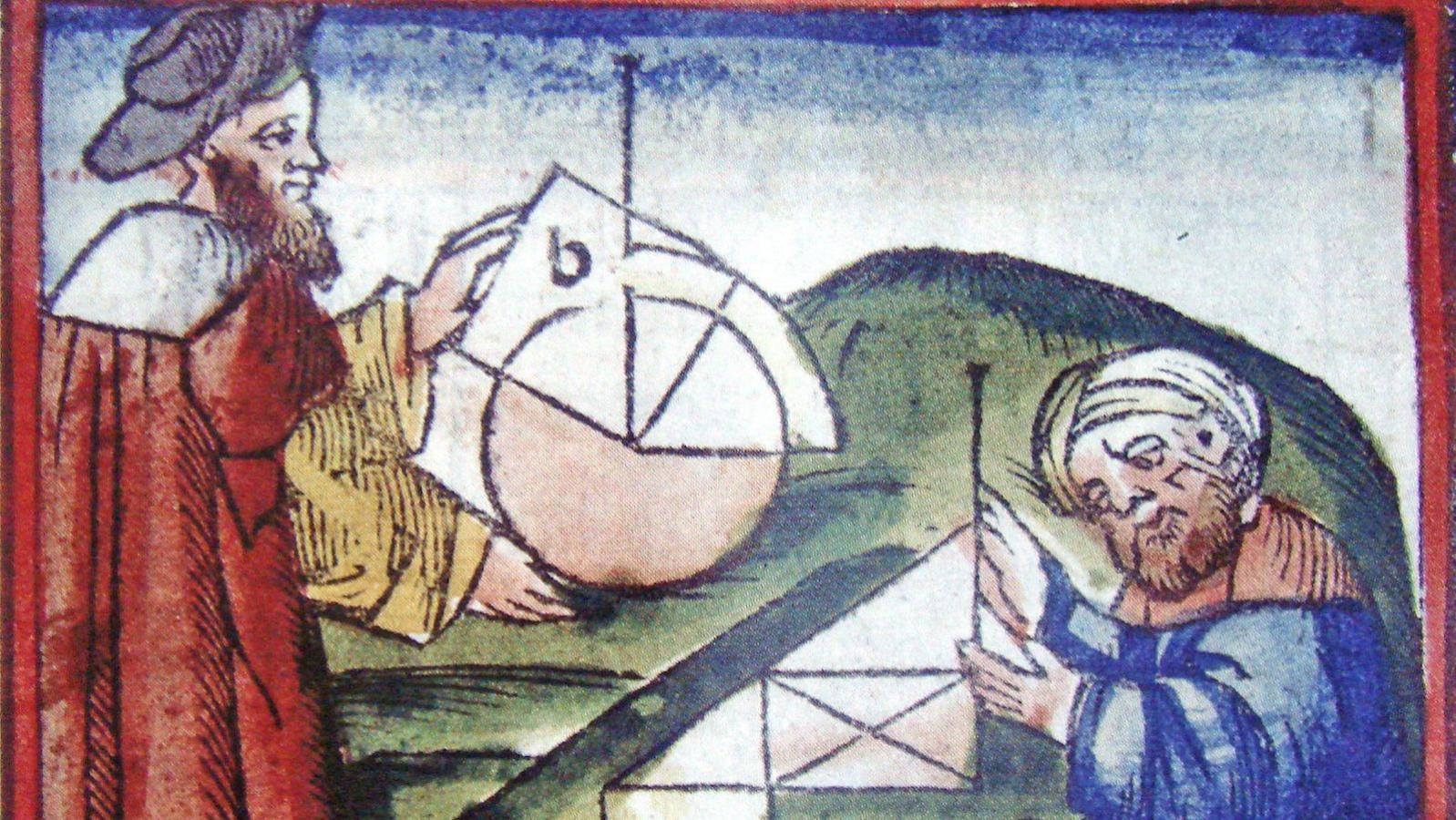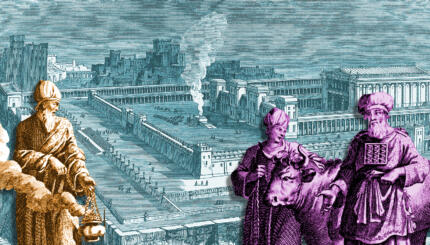Medieval science cannot be divided simply according to religious or ethnic categories. The same fields of knowledge, theories, practices and learned controversies were shared by the three monotheistic civilizations. Defining a “Jewish science” is, in fact, a discussion of the Jewish contribution to scientific development in general.
This contribution was particularly significant in four areas: medicine; geography and cosmology; development of instruments for measurement, cartography, and navigation; and translation of works from Greek into Arabic and from Arabic into Latin and other European languages. The Jews therefore constituted an important link in the transmission of scientific knowledge from one culture to another and were thus crucial to the emergence of modern science; they also played a major role in the creation of the necessary tools for world exploration.
Baghdad as Center for Jewish Scientific Activity
The first important center for medieval Jewish scientific activity in the eighth and ninth centuries was the Abbasid caliphate and particularly its capital, Baghdad. About a hundred years after the Muslim conquest of the Middle East, the name of the Jewish physician Masarjuwayh of Basra is mentioned as the first of a long list of men who translated Greek and Syrian works on medicine into Arabic. A Jewish convert to Islam, Rabban al‑Tabari, was the first to translate Ptolemy’s Almagest into Arabic. Isaac Judaeus (Isaac Israeli) is believed to have been the first medical author in Arabic whose works were brought to Europe.
In Spain, Jews Helped Make Arabic the Scientific Language
It was in Muslim Spain, however, that Jewish science found the most fertile soil. In the early Middle Ages Andalusia was the greatest cultural center of Europe and of the entire Mediterranean basin. Its Muslim rulers, opulent and tolerant, offered the prosperous Jewish elite opportunities for complete social and cultural integration, which were not surpassed anywhere throughout the Middle Ages.

Help us keep Jewish knowledge accessible to millions of people around the world.
Your donation to My Jewish Learning fuels endless journeys of Jewish discovery. With your help, My Jewish Learning can continue to provide nonstop opportunities for learning, connection and growth.
In Andalusia, as in the Muslim world at large, the Jews wrote their scientific treatises in Arabic, a language which they found best suited to this branch of human learning. Very early–in the mid‑10th century–Hisdai ibn Shaprut, a dignitary in the court of the caliph, leader of the Spanish Jewish community and an eminent physician, contributed to the construction of Arabic into a scientific vehicle, mainly by preparing the final Arabic version of the Materia medica, the great pharmaceutical compendium by the Greek botanist Dioscrides (1st century AD).
As Islam Shut Down Science, Jews Translated to New Languages
The demise of the Spanish caliphate put an end to flourishing Jewish and Muslim science in Andalusia. First the Almoravids, a fanatic sect from North Africa who conquered southern Spain at the end of the eleventh century, and then the Almohads, who came in the twelfth century, totally changed the intellectual climate in Muslim Spain: scientific inquiry and philosophical rationalism could no longer exist. Moreover, most of theJews were forced to leave. Some of them, including Maimonides, went to the east; the majority found refuge in Christian lands—northern Spain, southern France, Italy.
This was a turning point in the history of medieval science. As Muslim orthodoxy began stifling intellectual curiosity, the Latin West began to discover Greek science and its Arabic commentators. The Jews played a major role in this transition. Versed in Arabic and in European languages, they occupied a prominent place among the translators of important scientific works from Arabic into Latin, Spanish, and French. In Toledo and in the towns of Provence, numerous Jewish scholars translated a large number of works in philosophy, mathematics, geometry, physics, astronomy, astrology, medicine, and magic–a corpus of knowledge which constituted the basis for Latin science during the central and late Middle Ages.
At the same time another change was affecting Jewish science. Since the beginning of the twelfth century, Arabic was gradually being replaced by Hebrew as the sole language in which Jews wrote their scientific works. Translations from Arabic and Latin, as well as many original texts, were produced in Hebrew. Abraham ibn Ezra and Abraham bar Hiyya, philosophers and mathematicians, were the two most notable writers among these Hebrew‑writing medieval scholars.
Jewish Authorities Never Discouraged Medicine
What was the attitude of Jewish religious authorities toward scientific inquiry? In Muslim Spain and in North Africa the orthodox were not particularly hostile to scientific studies, although there were disagreements among the scholars themselves as to what constituted proper science from the point of view of the halacha [Jewish law] and of scientific validity. The rationalists, for example, eminently represented by Maimonides. rejected astrology and magic, even though most of their contemporaries considered these to be an integral part of scientific knowledge.
In the 13th and 14th centuries, however, Jewish society grew suspicious of all scientific activity. The condemnation culminated in a ban on the study of secular literature for persons under the age of 25, issued in 1305 by the rabbi of Barcelona, Solomon ben Abraham Adret (acronym Rashba), and other rabbis of southern France. However, even Rashba understood the importance of the study of medicine, and his ban did not restrict it in any way.
Reprinted with permission from Eli Barnavi’s A Historical Atlas of the Jewish People, published by Schocken Books.



